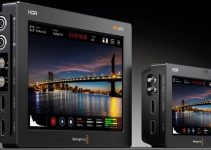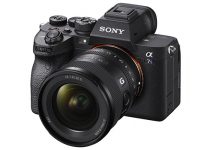Less than a week ago, Sony released the third iteration of their entry-level full-frame mirrorless – the A7III, a camera that immediately made waves in the independent filmmaking community. With an improved 24MP back-illuminated full-frame sensor coupled with updated features such as the long-awaited 4K recording in Full Frame and S35 mode, 5-axis stabilization, ISO 204800, dual SD slots, Wi-Fi/NFC, USB Type-C, and weather-sealing body, many filmmakers rushed to get their hands on the camera that’s an absolute steal for the price of $1,998.
Surprisingly, one of the standout features of this newcomer seems to be its excellent low-light performance. To test it out, talented filmmaker Max Yuryev puts the A7III against the A7RIII, A6500, and Panasonic GH5. In the video, he compares the rivals in sub-par lighting conditions at varying ISOs to see which camera can produce the cleanest image.
Starting with ISO 1600 and 3200, the footage from all the Sony cameras looked very clean, even in the least optimal lighting setup. For the Panasonic GH5, however, the noise started to creep up at ISO 3200 becoming more apparent in the shadow areas of the image.
At ISO 6400, some cameras quickly pulled ahead from the rest. Both the A7III and A7RIII were still able to produce impressively clean footage, although noise became more visible on the A7RIII. The A6500 footage looked even noisier than the A7RIII, but still usable at this stage. Unfortunately, the same couldn’t be said about the GH5 as the Micro 4/3 camera faltered at a fast pace under the higher ISOs.
Moving up to ISO 12,800 and the A7III had really come out on top against the cameras. Even at this point, the images seen in the comparison were surprisingly clean with minimal noise.
The A7RIII produced more artifacts, and of course, the A6500 followed suit along the way. Sadly, the GH5 wasn’t able to keep up with the other rivals as color shifting, and more-than-obvious color noise ruined its entire footage.
Meanwhile, the A7III and the A7RIII were the only cameras that can actually shoot at an ISO higher than 12,800. In the last part of the testing, the A7III and A7RIII were set to 51,200 ISO and 25,600 ISO respectively. Even at these high numbers, the A7III managed to outperform the A7RIII by a slight margin.
After seeing this comparison, I guess it’s safe to say that Sony has done some excellent work with the A7III. What once was a camera known for video capabilities that left too much to be desired is now an item on most video shooters’ wish lists, especially for those looking to buy their first full-frame camera.
Of course, it would be interesting to compare the A7III to the low-light monster the A7S II (as well as the GH5S), but Sony may still have some plans for that particular model. For now, if you’re looking for a mid-priced full-frame mirrorless camera with superior low-light performance, the A7III can undoubtedly give you the best bang for your buck.
[source: Max Yuryev]
Order Links:
- Sony Alpha a7 III Mirrorless Digital Camera (Body Only) (B&H, Amazon)
- Sony Alpha a7R III Mirrorless Digital Camera (Body Only) (B&H, Amazon)
- Sony Alpha a6500 Mirrorless Digital Camera (Body Only) (B&H, Amazon)
- Panasonic Lumix DC-GH5 Mirrorless Micro Four Thirds Digital Camera (B&H, Amazon)
Disclaimer: As an Amazon Associate partner and participant in B&H and Adorama Affiliate programmes, we earn a small comission from each purchase made through the affiliate links listed above at no additional cost to you.



